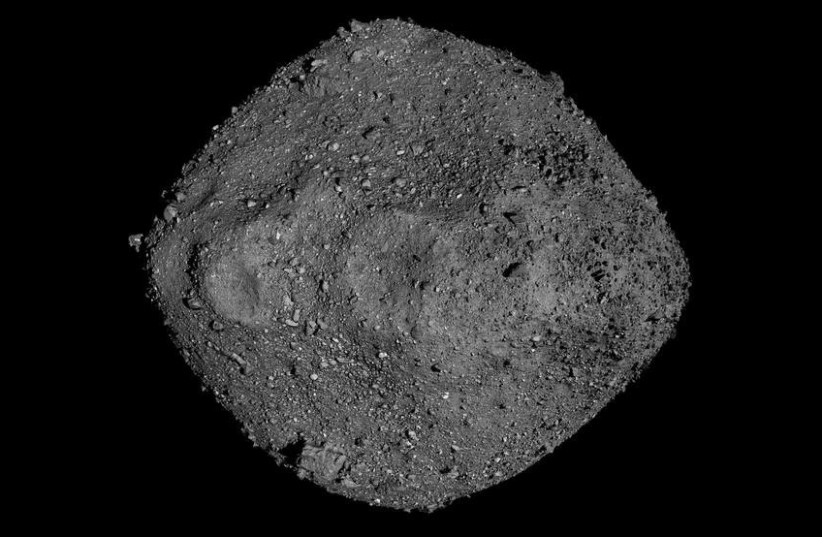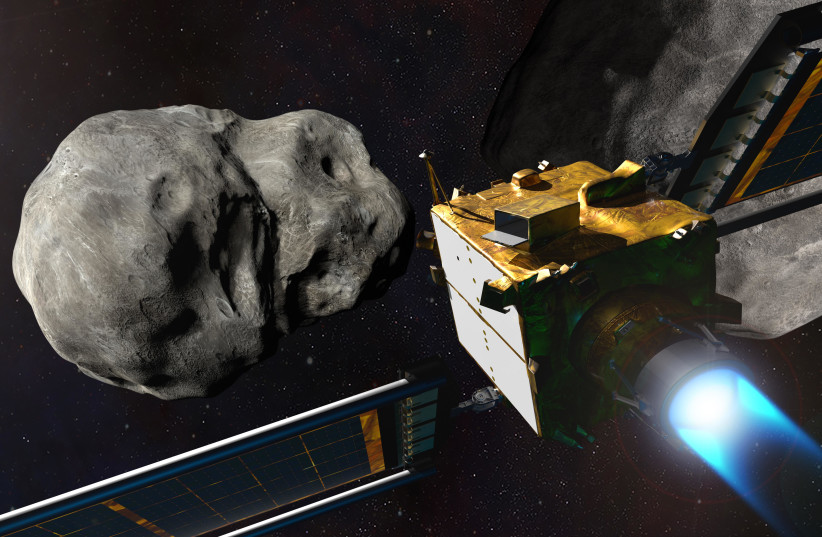Sukkot, a Jewish holiday associated with happiness and celebration, is about to end, and two asteroids are set to pass by Earth as it does, according to NASA's asteroid tracker.
Two asteroids are set to pass by Earth on Sunday, coinciding with Hoshana Raba, the last day of Sukkot, and ahead of the Simhat Torah holiday.
The two asteroids that are set to pass the Earth around Hoshana Raba and ahead of Simhat Torah have been designated 2020 BD and 2022 SK15, according to the Center for Near-Earth Object Studies (CNEOS) at NASA's Jet Propulsion Laboratory (JPL).
<br>How big is the asteroid coming towards Earth in 2022?
The Sukkot holiday has often been associated with Ushpizin, a cast of great biblical figures who are said to visit us as guests. Now, these asteroid Ushpizin are nowhere near as great as these biblical characters, and according to NASA, they're actually pretty small.
The first one coming, asteroid 2020 BD, is estimated to be between 15 meters and 30 meters in diameter.

For context, the maximum height of a sukkah, as stipulated by rabbinic tradition in the Oral Torah, is 20 amot, a unit of measurement roughly equal to 9.6 meters. That means at minimum, asteroid 2020 BD is around 1.5 times the maximum height of a sukkah.
The second asteroid, however, is much larger.
According to NASA JPL, asteroid 2022 SK15 has an estimated size ranging between 43 meters and 96 meters.
This is a far larger size, and is more comparable to the size of the 57-meter portion of the Western Wall used for prayers by Jews in Jerusalem's Old City.
In addition, asteroid 2022 SK15 is also far faster than its predecessor. While asteroid 2020 BD is clocking in at a still fast speed of around 11.40 kilometers per second, asteroid 2022 SK15 is zooming ahead at around 15.81 kilometers per second, or 56,916 kilometers per hour. This is well over twice the speed of a hypersonic missile.
<br>Will an asteroid hit Earth in 2022?
The end of Sukkot is marked by a special day, Hoshana Raba, when prayers of repentance somewhat akin to what was said on Rosh Hashanah and Yom Kippur are said and when the willow branches (aravot) are ritually beaten in synagogues. This is in line with beliefs that it is still the continuation of the focus on judgment seen on Yom Kippur. As a result, perhaps there are fears that the asteroids could be the harbingers of divine judgment, beating the Earth like they were willow branches on Hoshana Raba.
Well, have no fear, because these asteroids are more likely to just pass by the Earth like Torah scrolls are passed around the center of a synagogue on Simhat Torah, because based on NASA's calculations, we have nothing to worry about.

The asteroid that comes the closest around the end of Sukkot, asteroid 2022 SK15, is set to pass the Earth at a distance of around 3.6 million kilometers.
That's almost 10 times greater than the distance between the Earth and the Moon, which orbits the planet at an average distance of around 384,000 kilometers.
But how destructive would they be if they did hit? It certainly wouldn't be catastrophic, but it could still do some damage.
According to research from the Davidson Institute of Science, the educational arm of Israel's Weizmann Institute of Science, an asteroid 140 meters in diameter or more would release an amount of energy at least a thousand times greater than that released by the first atomic bomb if it impacted Earth.
An even larger asteroid that's over 300 meters wide – like the Apophis asteroid – could destroy an entire continent. An asteroid over a kilometer in width – like asteroid 138971 (2001 CB21), which passed the Earth in early March 2022 – could trigger a worldwide cataclysm.
At a maximum size of 96 meters in diameter, asteroid 2022 SK15 could still do some serious damage if it hit, but nothing apocalyptic or Earth-shattering.
But as for the question of whether an asteroid will ever hit the Earth in 2022, the answer is yes. Or rather, it already happened.
Back in March 2022, a small asteroid around half the size of a giraffe known as 2022 EB5 hit the Earth just hours after its discovery. But given how small it was, it didn't exactly result in any damage,
<br>When is the next asteroid predicted to hit the Earth?
Not for a very, very long time. NASA has calculated that the Earth is safe from any catastrophic asteroid impacts for the next century, meaning no asteroid-induced Armageddon is on its way.

Which asteroid could potentially hit Earth?
Scientists don't know for sure, but there are a few candidates for the most dangerous asteroid for the planet.
One of the most dangerous asteroids at the time of writing is Bennu, a gigantic 500-meter-wide asteroid that has an orbit that can cross with Earth's own.
If this asteroid impacted the Earth, the result would be catastrophic - but as far as NASA is aware, this won't be for a long time, if ever.

Do we have any way to stop an asteroid from hitting the Earth?
We just might, thanks to the hard work of scientists around the world.
The field of planetary defense is specifically organized to find ways of keeping the Earth safe from asteroids and scientists at NASA and across the globe are hard at work trying to do just that.
Most notably, this has involved pioneering the exciting technique of asteroid deflection, which uses kinetic energy through vehicular collision to ever so slightly change an asteroid's orbital path, meaning it would, in theory, no longer be set to crash into Earth but instead fly past it.
In layman's terms, NASA decided to make a spacecraft punch an asteroid to make it move out of the way.
In fact, that is exactly what recently happened over Rosh Hashanah in NASA's landmark Double Asteroid Redirection Test (DART) Mission, which tested out this theory on a faraway asteroid Dimorphous in the Didymous system.
And according to the results, the DART Mission was a success, managing to alter the asteroid's orbit.
Maybe in the future, it will be the asteroids getting beaten like willow branches on Hoshana Raba.
